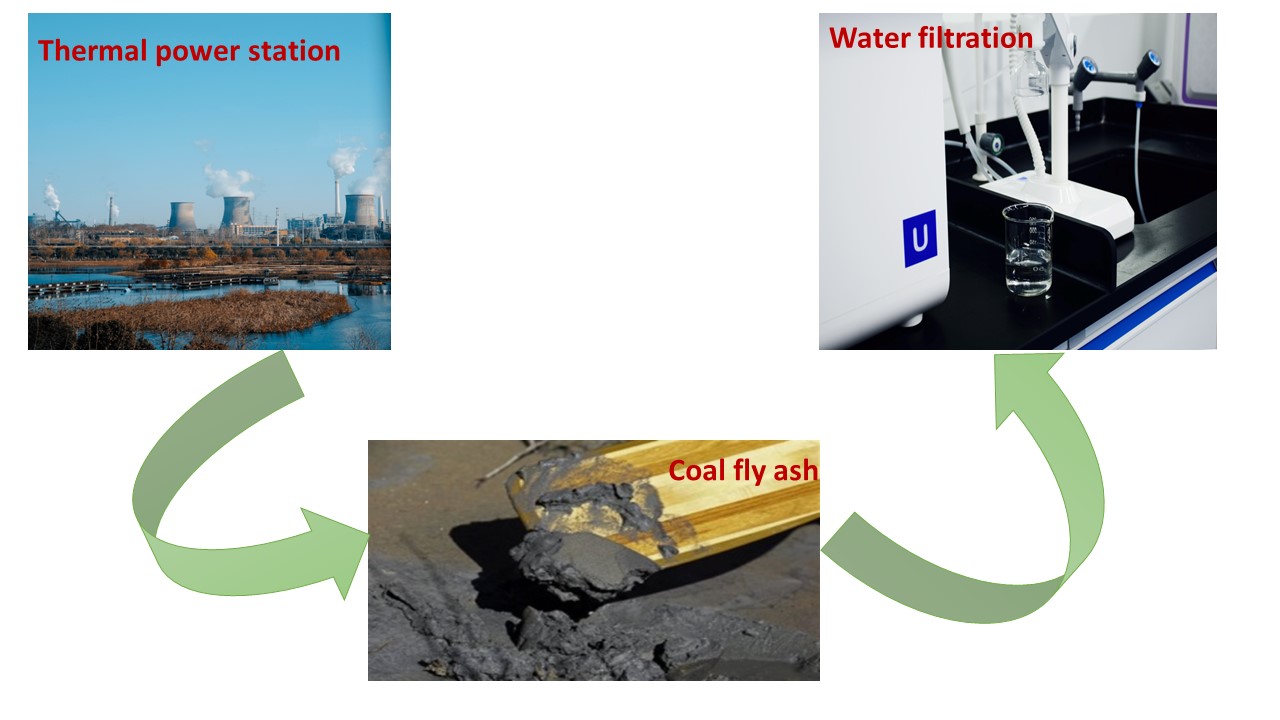By Sakshi Kabra Malpani, Publishing Associate: Researcher and Writer at Save the Water™ | August 5, 2022
Coal fly ash, a by-product of thermal power stations, has always been a potential threat to the environment. But nowadays, it can be converted into many meaningful products including membrane filters. Membrane filters are cheaper and eco-friendly, so they have replaced traditional water filtration techniques like distillation, evaporation, sedimentation, etc.
How is Coal Fly Ash a Threat to the Environment?
The world meets about 40% of its electricity demand by burning coal in thermal power plants. This coal burning produces huge amounts of coal fly ash which needs to be disposed of in eco-friendly ways. Coal fly ash has toxic heavy metals like cadmium, mercury, arsenic, chromium, nickel, and cobalt. These poisonous elements can leak out of it and contaminate the environment. They can also impact human health with skin and lung infections, cancer, nausea, vomiting, malfunctioning of vital organs, etc.
Trends in Recycling of Coal Fly Ash
In the past few years, researchers have worked very hard to develop new ways for recycling coal fly ash. Now, it has been used in adsorption, catalysis, wastewater treatment, ceramic materials, building materials, cement industries, horticulture, and more. Apart from these uses, costly metal and metal oxides can also be extracted from it.
How do Membrane Filters Work in Water Treatment?
Membranes are semi-permeable, porous sheets that can separate dissolved solids and contaminants from water when some driving force is applied. They are generally used to treat and process wastewater, groundwater, drinking water, rainwater, etc. Depending upon the water quality and types of impurities in it, a membrane filter is selected for water treatment. It helps in the removal of particles, microbes, micropollutants, harmful ions like fluoride, chloride, cyanides, and other fouling organic materials. Based on the pore size of membranes and the size of impurities to be filtered out, there are four common methods of membrane filtration in water treatment, namely, microfiltration, ultrafiltration, nanofiltration and reverse osmosis.
Different Types of Membrane Filters
There are several commonly used membrane filters:
- Synthetic organic polymers (like polysulfone, cellulose acetate, polyethylene, polypropylene) which are very porous, strong, flexible, lightweight, durable, and ultrathin. They could be used in water treatment, gas separation, nanofiltration of solvents, etc.
- Inorganic membranes like ceramics and metals. Ceramic membranes are microporous, thermally and chemically stable, and frequently used in microfiltration and nanofiltration. Metallic membranes are finely porous and normally composed of stainless steel. They are often used in gas separations but could also be used for wastewater treatment at high temperatures.
Coal Fly Ash as Membrane Filters
Despite various advantages associated with ceramic membranes, they are less frequently used in wastewater treatment because of their delicate nature and complicated manufacturing process. Raw materials used in their production like high purity alumina and silica are expensive. Coal fly ash is a rich source of silica and alumina and thus can be used to fabricate cheaper ceramic membranes. Such membranes also offer extra benefits like high pressure and mechanical stability, longer lifetime, better porosity, durability, resistance towards biological degradation. Coal fly ash based ceramic and geo-polymeric membranes have been used in the treatment of industrial wastewater, removal of dyes and heavy metals, seawater desalination, municipal wastewater treatment, and other processes. These membranes have a great number of pores, so they can withstand large amounts of water. Various studies have concluded that the use of such membrane filters has reasonably reduced turbidity, total dissolved solids, and oil content from wastewater.
Future perspectives
Many researchers have been working on improvement in filtering capacity and porous nature of coal fly ash based membrane filters and their use at large scale. We can also empower them by replacing traditional membrane filters in our vicinity with these eco-friendly substitutes.




